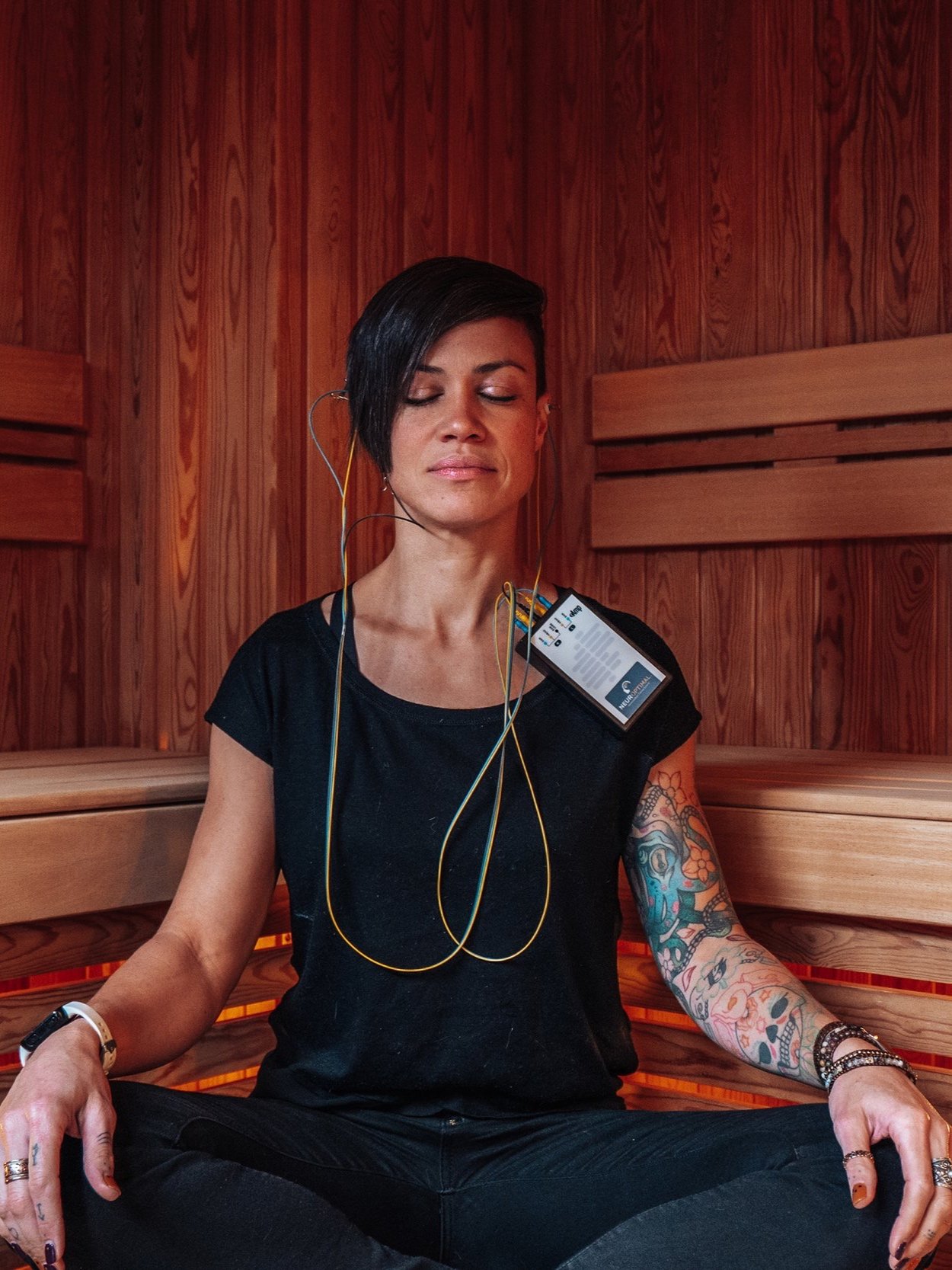
Brainspotting
What is Brainspotting?
Brainspotting is a cutting-edge trauma therapy based on one simple truth: where you look affects how you feel.
When your brain experiences trauma, it sometimes can’t process and store the memory correctly. Instead of being filed away in the past, the unprocessed emotions get “stuck,” creating anxiety, depression, PTSD symptoms, or patterns in relationships you can’t seem to shake.
Brainspotting helps your brain locate these buried emotional files and process them safely, so they no longer control your present.
How Brainspotting Works
Brainspotting uses your field of vision to access precise areas in the brain where trauma is stored. With gentle guidance, you’ll notice eye positions that connect to discomfort or activation. By holding your gaze at those “brainspots,” your brain begins to naturally reprocess the memory—shifting it from stuck to resolved.
This powerful technique bypasses the logical brain and taps into the limbic system, brain stem, and right hemisphere—the parts that store emotional and body-based trauma.
The result: your brain and body finally release what’s been stuck, leaving you calmer, clearer, and more connected to yourself.

Why Clients Choose Brainspotting
Deep trauma resolution – heal PTSD, complex trauma, childhood abuse, and relational wounds.
Gentle + client-led – you remain in control; I guide and support without forcing retelling.
Faster than talk therapy – many clients notice shifts after just 1–2 sessions.
Whole-person healing – Brainspotting not only resolves trauma but also boosts clarity, creativity, and performance.
What Brainspotting Can Help With
PTSD and C-PTSD
Childhood and relationship trauma
Sexual abuse or assault
Anxiety, depression, phobias, and panic
Attachment wounds and self-esteem struggles
Medical trauma and accidents
Relationship patterns and codependency
Burnout, performance anxiety, and creative blocks

Brainspotting Intensives
At Wild Oaks Counseling, Brainspotting is available in traditional formats & intensive formats—2–3 hour focused sessions that accelerate healing.
Why choose an intensive?
Move through trauma in hours instead of months.
Avoid the “start-stop” of weekly 50-minute sessions.
Free yourself from looping stories and stuck feelings in a concentrated, safe setting.
Ideal for high-achieving women with busy schedules who want faster results.
What to Expect in a Brainspotting Session
Step 1: Setting focus. Together, we identify a goal, memory, or area of distress.
Step 2: Finding your brainspot. Using gentle eye-positioning, we locate the point that activates your body’s response.
Step 3: Processing. You hold your gaze while your brain naturally begins to reprocess and release the trauma.
Step 4: Integration. We anchor in the shifts so you leave with new clarity and calm.
Most clients are amazed at how quickly their body feels lighter and their mind more settled.
Begin Your Healing With Brainspotting
Your brain already knows how to heal—it just needs the chance. Brainspotting gives it that opportunity.

Two Ways to Work Together
Individual Trauma Therapy
You may hesitate to even call it “trauma.” After all, you’ve built a good life, achieved a lot, and from the outside, you look successful. But inside, it often feels different. Maybe your childhood was marked by emotional distance, high expectations, or experiences you’d never want anyone else to go through. Maybe past relationships left you questioning your worth, your judgment, or your ability to trust.
You find yourself worrying constantly, second-guessing decisions, struggling to feel confident, or replaying conversations long after they’re over. Trauma therapy can help you reconnect with yourself, quiet the self-doubt, and begin creating relationships where you feel safe, secure, and deeply seen.
These sessions are offered in a traditional therapy format on an ongoing basis.
Trauma Therapy Intensives
Traditional weekly therapy has its place, but for many high-achieving women, busy moms, and professionals, it can feel slow, fragmented, or like “just another appointment.” That’s why I offer trauma therapy intensives—customized, extended sessions designed to help you go deeper, faster.
Intensives are longer sessions (typically 3+ hours over 1–3 days) with a focused, intentional goal. They’re especially effective for healing specific traumas, breaking through plateaus when you feel stuck in weekly therapy, or jumpstarting your growth with a strong foundation of skills and insight.
Instead of spending months circling the same patterns, you’ll have the time and space to fully process, release, and reset—so you can move forward with clarity and confidence.
-

Accelerated Resolution Therapy (ART)
ART uses gentle eye movements and visualization to help your brain release stored trauma quickly and effectively. Many clients notice significant relief in just 1–3 sessions, making it a powerful tool for resolving painful memories and shifting negative beliefs.
-

Brainspotting (BSP)
Brainspotting uses the connection between your gaze and your nervous system to access and heal trauma at a deep level. By focusing on specific eye positions, your brain and body are able to process unresolved experiences in a way that feels natural and profound.
-

Neurofeedback
Neurofeedback helps retrain your brain to regulate itself. By receiving real-time feedback, your brain learns to spend more time in calm, focused, and balanced states—so regulation becomes your default rather than the exception.
-

Enneagram
The Enneagram is an insightful framework for understanding your core motivations, fears, and adaptations. It can help you recognize patterns that no longer serve you, deepen self-awareness, and create more authentic connections with others.
Brainspotting vs. ART vs. EMDR: What’s the Difference?
Many clients come to me after hearing about EMDR, only to discover that Brainspotting or Accelerated Resolution Therapy (ART) might be a better fit for them. All three are evidence-based trauma therapies, but they work in different ways.
Therapy
Brainspotting (BSP)
Accelerated Resolution Therapy (ART)
Eye Movement Desensitization & Reprocessing (EMDR)
How It Works
Uses eye positions to access “brainspots” where trauma is stored in the body and nervous system.
Combines eye movements with visualization to replace distressing images with positive ones.
Uses eye movements or tapping to reprocess traumatic memories.
Best For
PTSD, C-PTSD, anxiety, attachment wounds, relationship trauma, creative/performance blocks.
PTSD, phobias, anxiety, shame, single-event trauma, negative self-beliefs.
Widely researched for PTSD and trauma.
Unique Benefits
Client-led, gentle, deep body-brain connection, faster breakthroughs with fewer words.
Often fast (1–3 sessions), no need to share trauma details, highly structured yet creative.
Well-established, highly researched, but can feel longer, more rigid, and emotionally activating.
Why I offer Brainspotting and ART (but not EMDR):
As both a therapist and a former client, I’ve found Brainspotting and ART to be gentler, faster, and more flexible than EMDR. They allow you to experience profound shifts without retraumatization, and in my practice, clients often notice relief in hours instead of months.

Brainspotting FAQs
Q: Is Brainspotting the same as EMDR?
Brainspotting was developed by a former EMDR trainer and shares the principle of using eye positions to process trauma. However, Brainspotting bypasses the “cognitive” layer and targets the body-brain connection more directly. Many clients find it gentler, faster, and less structured than EMDR.
Q: How fast does Brainspotting work?
Because Brainspotting accesses the emotional and body-based systems directly, it often leads to faster breakthroughs than traditional talk therapy. Some clients feel immediate relief, while others choose multiple sessions or intensives for more complex trauma.
Q: Do I have to talk about my trauma?
While you’re welcome to share as much or as little as you like, Brainspotting doesn’t require you to retell your trauma. Instead, your body and brain do the work while I support and guide. Many clients find this reduces shame and makes the process feel safer.
Q: Is Brainspotting safe?
Brainspotting is designed to be safe and supportive. While you may briefly feel activation as your brain processes stuck material, you remain in control and the process moves at your pace. Most clients leave sessions feeling lighter, clearer, and more at peace.
Q: How is ART different from EMDR?
Accelerated Resolution Therapy (ART) also uses eye movements but pairs them with visualization to replace distressing images with positive ones. Unlike EMDR, ART doesn’t require retelling your trauma and is often completed in fewer sessions.
Q: Should I choose Brainspotting or ART?
Brainspotting and ART both reprocess trauma quickly, but they feel different. ART guides you through a structured process of replacing painful images, while Brainspotting allows your brain and body to lead the way. Some clients prefer one, some use both. We’ll decide together which best fits your goals.
Q: Why don’t you offer EMDR?
While EMDR is highly researched and effective, in my clinical and personal experience Brainspotting and ART lead to faster, more comfortable breakthroughs with less retraumatization. That’s why I’ve chosen to specialize in these modalities.



